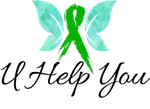Holiday Blues
The Holidays can be a very exciting time of the year. It can also be a very stressful time of the year. The stress we experience during the Holidays can be “good stress” and/or “bad stress.” So you may be asking what is the difference between “good stress” and “bad stress.” “Good stress” is called Eustress. “Bad stress” is called distress.
Eustress can be defined as a pleasant or curative stress. We can’t always avoid stress, in fact, sometimes we don’t want to. Often, it is controlled stress that gives us our competitive edge in performance related activities like athletics, giving a speech, acting, etc. It’s that stress we feel when we are thinking of what to pack to take to our family’s house for the Holidays, what gifts to purchase this year, what food to prepare for our Holiday dinner, etc. Although preparing for the Holidays can be exciting it can also be overwhelming.
Distress refers to the baleful effects of stress, with long-term negative impact. Distress may appear either when stressors are too strong or moderately strong to weak but frequent. Whether a certain stress will turn into distress and to what extent depends greatly on one’s own physical and mental resistance, which is different for every individual. Distress is that stress we feel when every Holiday gathering a family member argues with another, you miss your flight to visit family due to traffic or bad weather and all other flights are sold out, or even the triggers you get during Holiday gatherings that remind you of some childhood or family trauma.
Eustress is what makes us get up in the morning, it helps athletes perform at their best, and can frequently bring out the best performance in all of us. Unfortunately distress is what we typically think of when we hear the word stress. Distress decreases performance, and over time can lead to health difficulties. In our every day lives it is not often one big event (although it can be) that leads to someone being “stressed out.” Typically it is the build up of all the little things, which go unnoticed. The proverbial straw that broke the camel’s back.
*So what does stress have to do with the Holiday Blues? Now that we understand the different types of stress let’s define Holiday Blues and how it can be triggered by stress.
What are Holiday Blues?
The Holidays are supposed to be a joyful time of good cheer and optimistic hopes. Yet, it is not unusual for many of us to feel sad or lonely during the Holiday period — a condition that has come to be called Holiday Blues or Holiday Depression.
Holiday Depression may occur at any Holiday or vacation time, but most commonly happens during the December Holidays when, it may seem, just about everyone in the world is celebrating in some way. There are many causes for Holiday Blues, and the symptoms may mimic clinical depression.
While they may be intense and unsettling, Holiday Blues are usually short-lived, lasting for a few days to a few weeks prior to or just after the Holiday. The good news is Holiday Blues usually subside after the Holiday season is over and daily routines are resumed.
There is a long list of recommended Do’s and Don’ts for managing your Holiday Blues. The most important things to remember are: it’s a normal response to a stress-filled time of the year, and you don’t have to suffer unnecessarily. Find someone to talk with who can help you through this difficult time — a family member, friend, member of the clergy, or a physician or professional counselor.
Holiday Blues, although serious, should not be confused with another condition called Seasonal Affective Disorder, which is a clinically diagnosed mood disorder that usually occurs during the winter months.
Causes of Holiday Blues
Many factors may contribute to the holiday blues:
*Increased stress
Fatigue
Unrealistic expectations
Inability to be with family
Memories of past Holiday celebrations
Over commercialization
Change in diet
Change in daily routines
Symptoms of Holiday Blues
Symptoms of the Holiday Blues may include:
Headaches
Inability to sleep or sleeping too much
Changes in appetite causing weight loss or gain
Agitation and anxiety
Excessive or inappropriate feelings of guilt
Diminished ability to think clearly or concentrate
Decreased interest in activities that usually bring pleasure, such as:
Food
Sex
Work
Friends
Hobbies
Entertainment
Do’s & Don’ts to Manage Holiday Blues
The DO’s of managing Holiday Blues
Do follow the three basics for good health:
Eat right
Get plenty of rest
Exercise regularly
Do set realistic goals
Organize your time
Make lists
Prioritize
Make a budget and follow it
Do let go of the past and create new or different ways to celebrate
Do allow yourself to feel sad, lonely or melancholy — these are normal feelings, particularly at holiday times
Do something for someone else
Do enjoy activities that are free
Do spend time with people who care about you
Do spend time with new people or a different set of friends or family
Do contact someone with whom you have lost touch
Do give yourself a break — plan to prepare (or buy) one special meal, purchase one special gift, and take in one special event. The rest can be ordinary, but will seem special because of the time of year and the people you’re with
Do treat yourself as a special holiday guest
The DON’Ts of managing Holiday Blues:
Don’t drink too much alcohol
Don’t overindulge in holiday foods, especially those that are high in sugar & fat
Don’t have unrealistic expectations of yourself or others
Don’t dwell on the past
Don’t focus on what you don’t have
Don’t spend money you don’t have
Seasonal Affective Disorder
What is Seasonal Affective Disorder?
Seasonal Affective Disorder, or SAD, is mood disorder characterized by mental depression related to a certain season of the year – especially winter. Onset usually occurs during adulthood, and it is four times more likely to happen to women than men. Approximately 11 million people are diagnosed with this disorder, which has been incorrectly referred to as “winter blues.” SAD is a clinical diagnosis accepted in the medical community. Dr. Norman E. Rosenthal, Chief of Environmental Psychiatry Branch of the National Institute of Mental Health is the researcher credited with discovering SAD.
What are the symptoms of Seasonal Affective Disorder?
Daytime drowsiness
Fatigue or low energy level
Decreased sex drive
Diminished concentration
Difficulty thinking clearly
Tendency to overeat sweets and carbohydrates causing weight gain
Decreased sunlight is thought to be part of the cause of SAD, and is under clinical investigation. One treatment for SAD, which seems to improve the symptoms, is exposure to bright light, especially in the morning.
The Holiday Blues and Seasonal Affective Disorder can be temporary and very manageable with proper care. If you find yourself or a loved one with any of the above symptoms please seek help. You are not alone. Please remember moderation is key. Find your balance and try to maintain it. Happy Holidays this year and always!
Disclaimer: The advice provided should not be considered psychotherapy or professional medical advice. It is important that the blog’s readers seek the kind of professional advice and insight that you can only receive from one-on-one interaction with a qualified therapist or counselor. Always seek the advice of a licensed mental health practitioner without delay with questions you may have regarding any mental health symptom or medical condition. Please never disregard professional advice because of something you have read on “U Help You.”




